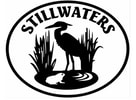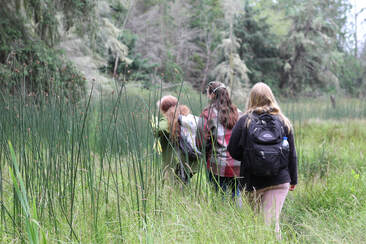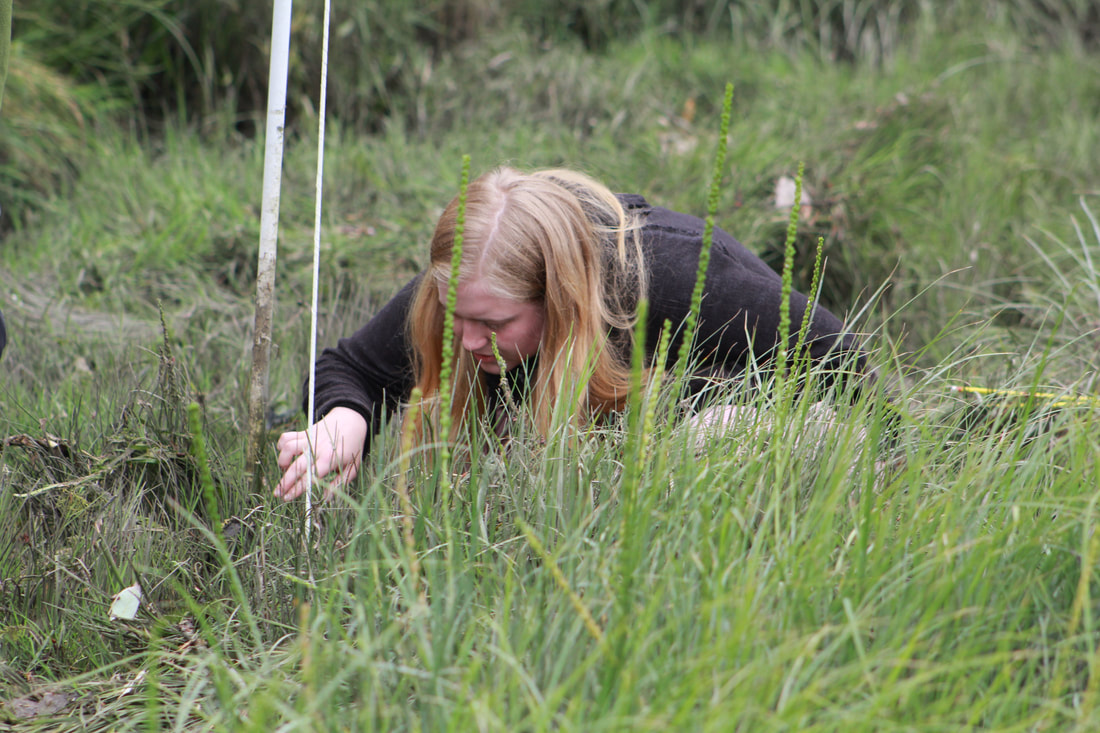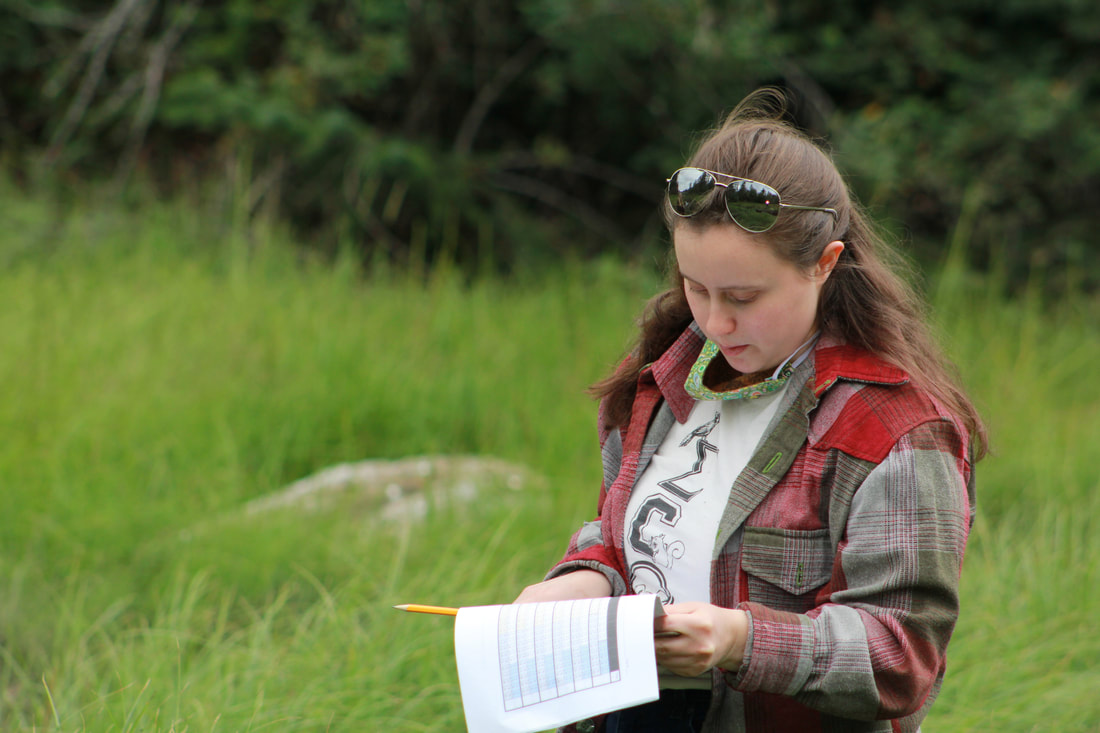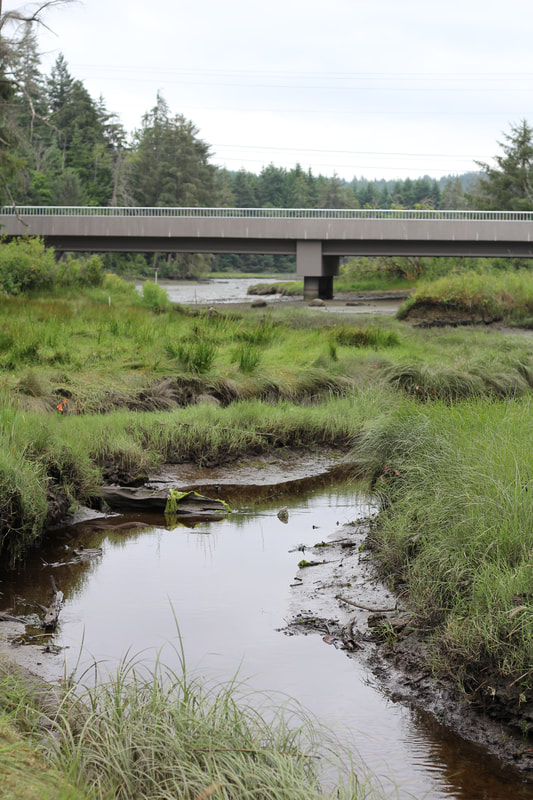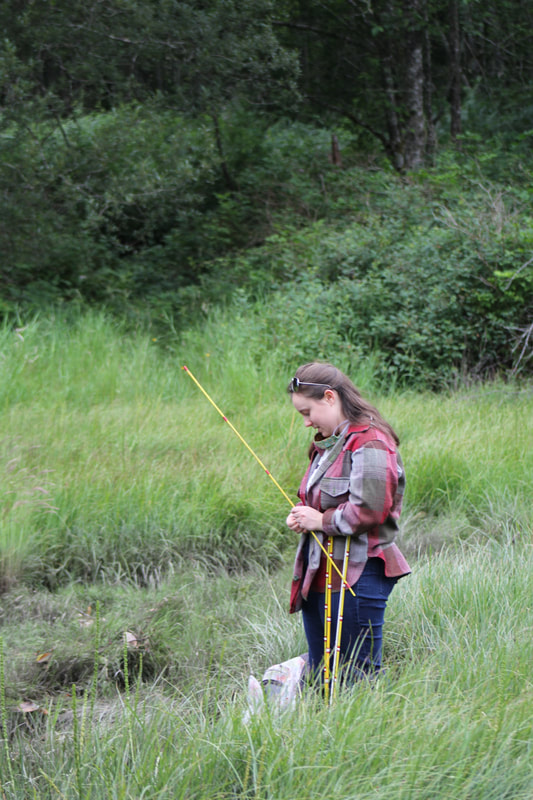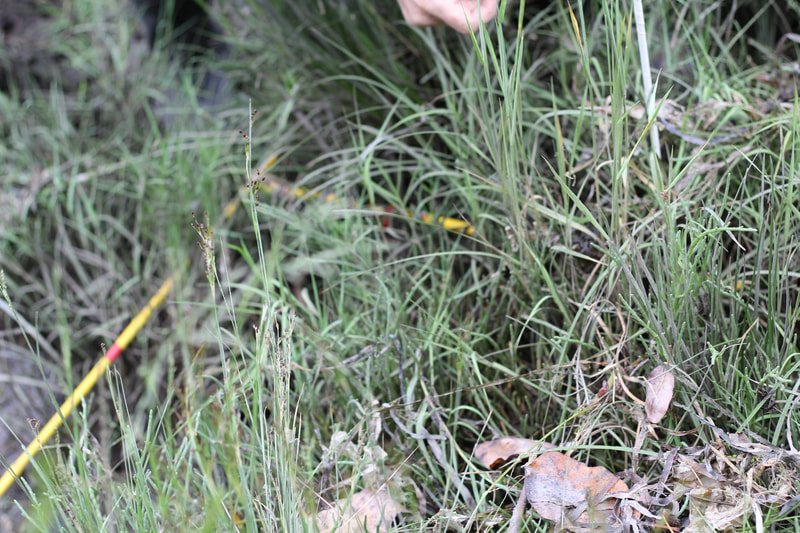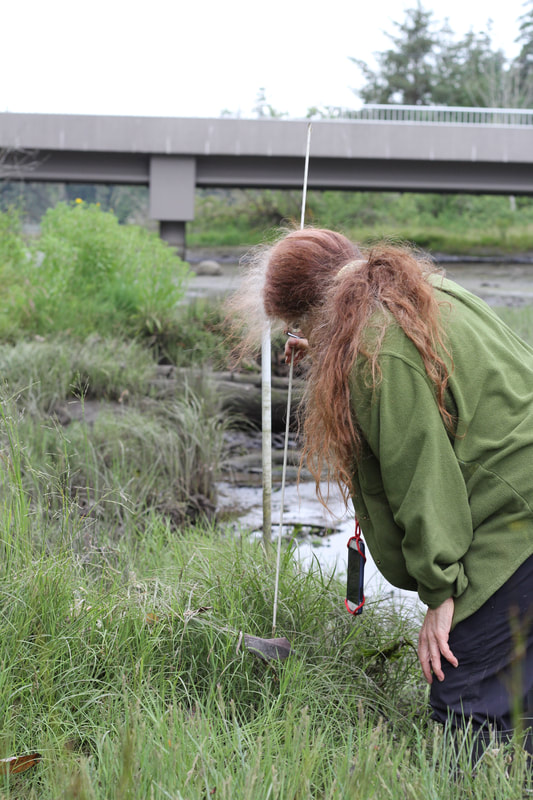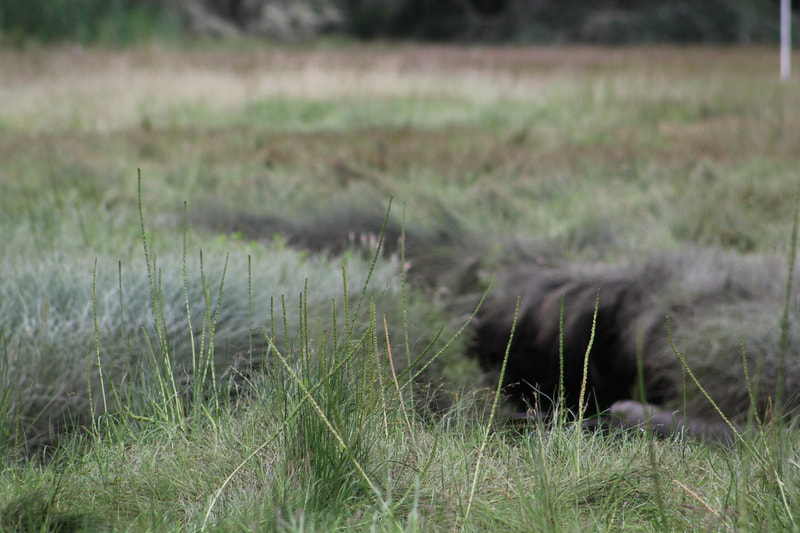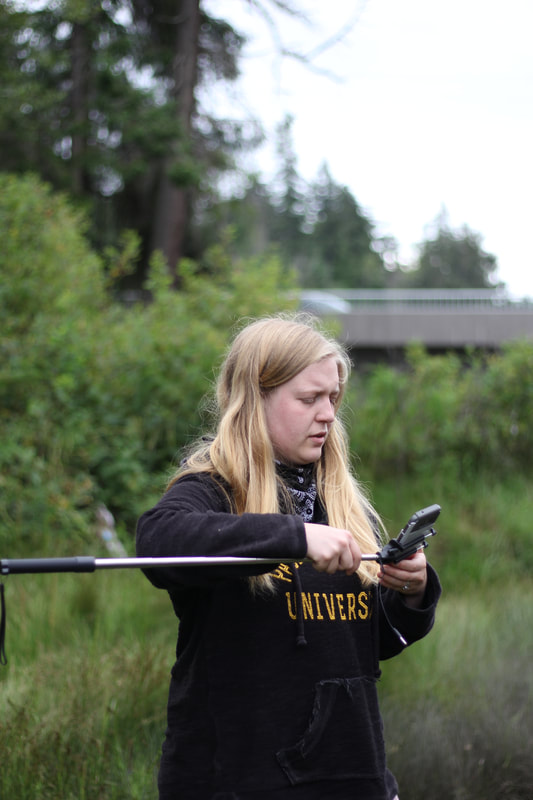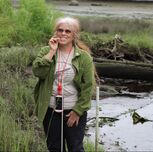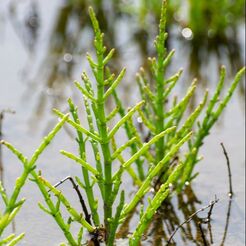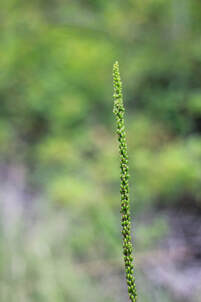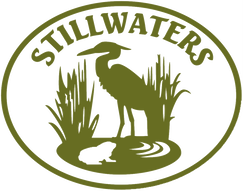Vegetation Surveys:
Documenting the Restoration
Stillwaters has been highly productive in generating data tracking the recovery of Carpenter Creek Salt Marsh and Appletree Cove Estuary. We are particularly interested in how the plant composition of the salt marsh is changing with the removal of the undersized culvert at West Kingston Road that was restricting the flow of salt water into the marsh and fresh water down Carpenter Creek.
Prior to the new West Kingston Bridge being finished in February of 2018, we know from monitoring water levels in the salt marsh and estuary, that fresh water was backing up behind the culvert during our rainiest months, restricting and diluting tidal influences.
Prior to the new West Kingston Bridge being finished in February of 2018, we know from monitoring water levels in the salt marsh and estuary, that fresh water was backing up behind the culvert during our rainiest months, restricting and diluting tidal influences.
We continue to document how salt marsh vegetation is affected by changes in hydrology now that natural tidal flow has been restored. How tides and fresh water inputs interact in the marsh determines which plants will grow there, which in turn determines whether the right kinds of insects are around to provide food for birds, juvenile salmon, forage fish, and aquatic invertebrates that use the salt marsh and estuary. A grant from Conservation, Research, and Education Opportunities International (CREOi) is supporting our continued research on this important component of salt marsh recovery.
For the past two summers, volunteers surveyed salt marsh plants in 15 one-meter square plots located throughout the marsh. Last year, they also surveyed additional vegetation plots specifically in and around areas with invasive reed canary grass. We are hoping that changing hydrologic conditions in the salt marsh will favor the return of native salt-tolerant plant species over invasives like reed canary grass. We are actively repeating these surveys as well as vegetation transect surveys done prior to culvert removal to track vegetation changes. We don’t know how long it will take for these plant communities to respond to any changes in fresh and saltwater inputs to the marsh, so we will be scheduling vegetation surveys annually for a few more years, then perhaps every other year thereafter depending on what we find.
For the past two summers, volunteers surveyed salt marsh plants in 15 one-meter square plots located throughout the marsh. Last year, they also surveyed additional vegetation plots specifically in and around areas with invasive reed canary grass. We are hoping that changing hydrologic conditions in the salt marsh will favor the return of native salt-tolerant plant species over invasives like reed canary grass. We are actively repeating these surveys as well as vegetation transect surveys done prior to culvert removal to track vegetation changes. We don’t know how long it will take for these plant communities to respond to any changes in fresh and saltwater inputs to the marsh, so we will be scheduling vegetation surveys annually for a few more years, then perhaps every other year thereafter depending on what we find.
We’ve also been working on controlling invasive plants by more active measures. Willow stakes planted along the creek finally made real headway by growing taller than the surrounding reed canary, despite having been planted in less-than-ideal conditions and subjected to beavers a few years ago that reduced most of them to stumps. “Shading out” reed canary has been a successful management strategy elsewhere.
Last year, encouraged by the vigor of these long-suffering native willows, volunteers removed reed canary grass by hand from one long-established and one newly-established area and planted more willow stakes. By monitoring the willows’ growth, we hope to determine if the shade of the reed canary grass may have initially helped the willows survive the summer heat until they could establish a good root system. It would be great if the reed canary could help control itself in this manner!
Another success was when a sharp-eyed volunteer noticed yellow-flag iris growing for the first time among the reed canary grass near one of our water-quality monitoring sites. We were able to dig up five individual irises and have yet to see any more.
Salicornia Maritima - "Some parts are edible!"
|
Program Director, Melissa Fleming, demonstrates that some parts truly are edible.
|
Salicornia goes by many names – sea bean, asparagus of the sea, or samphire. This sea vegetable can be cooked just like any other. Whether sautéed with olive and garlic, or simply boiled or steamed, this vegetable has a natural salty flavor.
Technically a succulent, it grows in small bushes in the salt marsh. They actually look like small stalks of asparagus. Not only are these sea beans tasty, they’re good for you, too! Salicornia is rich is minerals and vitamins A, B, C, and D. It is also known to help strengthen the immune system and offer purifying effects. |
Triglochin MaritimaCommonly known as Sea Arrow-grass, Trichlochin Maritima is found in saltwater marshes, alkaline freshwater marshes, and other brackish areas. Experiments in salt marshes in New England indicate that arrow-grass is an ecosystem engineer, as it enhances plant diversity. Its dense root mat creates a ring of elevated soil from which other plant species can benefit. Triglochin is sometimes poisonous; the green leaves can contain a possible build-up of cyanide that occurs around drought conditions. So even though we have our share of rain in Kitsap County, so you shouldn't eat it unless you know what you are doing!
|
